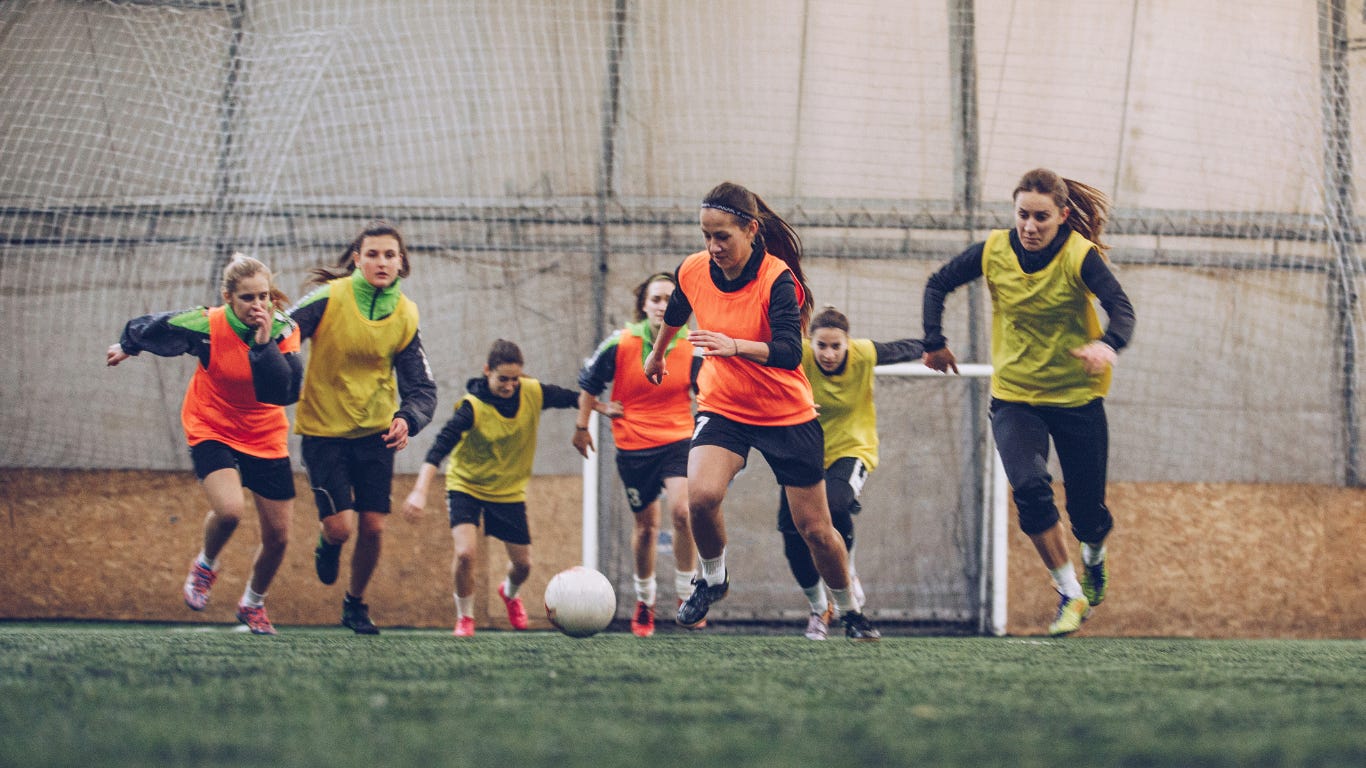Your Knee is Supposed to Rotate
How lack of knee rotation predisposes female youth athletes to ACL injuries
Most of us know that our knees is supposed to Flex and Extend.
You can find many of us pulling our leg back to stretch our “Quads” and extend our knee to stretch our “Hamstrings” before running.
What many of us don’t know is that our knee is supposed to rotate. Not only that, we don’t realize that rotation is fundamental to our Knee’s health, longevity and performance.
When we talk about Knee Rotation, we are actually referring to Tibial Rotation. The Tibia is the one of two bones of the lower leg and is the more prominent one of the two. If you feel just below the bend of the knee, an inch or so from the kneecap, you may be able to feel your Tibial Tuberosity.
One of the things that I’ve found when assessing many of my clients is that they not only didn’t know their knee was supposed to rotate, but cannot access or control this rotation.
Based on the anatomy of the connective tissues that insert at the knee joint capsule, we know that the Hamstring is the primary rotator of the Tibia.
What I find fascinating about this fact is this:
If you can’t actively rotate your Tibia then this means you can’t move into rotation.
Since you can’t move where you can’t move, you also can’t train what you can’t move.
So you can’t make stronger something that you don’t have control of moving and controlling.
In other words, if you can’t move your Hamstring tissue to coordinate movement of your Tibia, then there’s a blindspot in your Hamstring strength and control.
But how does this relate to an athletes ACL?
Your ACL is a ligament that connects the Femur (upper leg bone) and the Tibia. The way it is oriented within the capsular tissue is such that it absorbs a degree of rotational force, particularly Internal Rotation and helps to prevent the Tibia (lower leg bone) from sliding forwards
Your Hamstring tissue is aligned in such a way that it helps stabilize the knee joint. When the Hamstrings function well and can provide a greater degree of load bearing capacity, they can help support the knee by helping control the amount of Tibial movement that may contribute to ACL injury.
Knee rotation is among a variety of factors including anatomical, hormonal, biomechanical, and neuromuscular differences between men and women that could impact potential for ACL injury. Internal Rotation in particular, has been identified as a potential risk factor for non-contact anterior cruciate ligament (ACL) injuries. This is because the ACL’s job is to control Internal Rotation. Internal Rotation places additional stress on the ACL and can lead to its rupture.
Female soccer players also often have a greater Q-angle (the angle between the quadriceps muscle and the kneecap) than male players, which also might contribute to increased risk of ACL injuries.
To mitigate the risk of ACL injuries, it is important to include exercises that target the hamstrings as a whole and not forget about the hamstring’s role in knee rotation, for a comprehensive “injury prevention” or mitigation program.
Training to Mitigate potential ACL injury
A successful program should include exercises that focus on proprioception (awareness of joint position) and neuromuscular control in addition to tibial rotation exercises as well as targeted strength and conditioning program to improve knee stability and decrease the risk of ACL injury.
With my clients, whether they are competitive soccer athletes, basketball players, recreational weekend warriors, or seasonal like skiers, the first thing we focus on is awareness and neuromuscular control.
We begin by figuring out whether the knee rotates or not. A healthy knee rotates.
Once we’ve established Rotation and an awareness of that movement, we assign Daily Knee CARs to everyone.
CARs stands for Controlled Articular Rotations.
With CARs we provide a Daily input as a learning tool. Let’s learn how to move your Knee under your own power.
Once CARs have become a part of our routine, we begin building more rotation if required. This is done utilizing long duration stretches along with isometric strengthening called PAILs and RAILs.
Next we begin to load the tissues in rotation specifically and learn how to control loads through a range of rotation utilizing various forms of isometrics and eccentric training.
Finally, we add dynamic loading in order to help the athlete/client learn to dynamically control loads.
Unlike typical training programs, we focus heavily on improving connective tissue load bearing, because at the end of the day it is our connective tissue that either bears the load or breaks trying to do so. Injury happens when loads exceed capacity so we focus on building capacity to mitigate the potential for injury.
If you’ve got questions or interested in working with me feel free to reach out.
Be sure to Like and share this with someone who may find this helpful.




